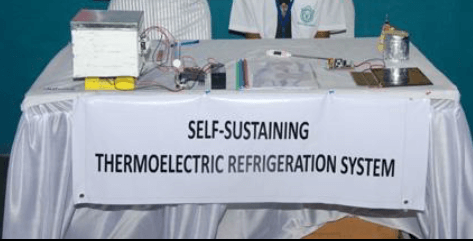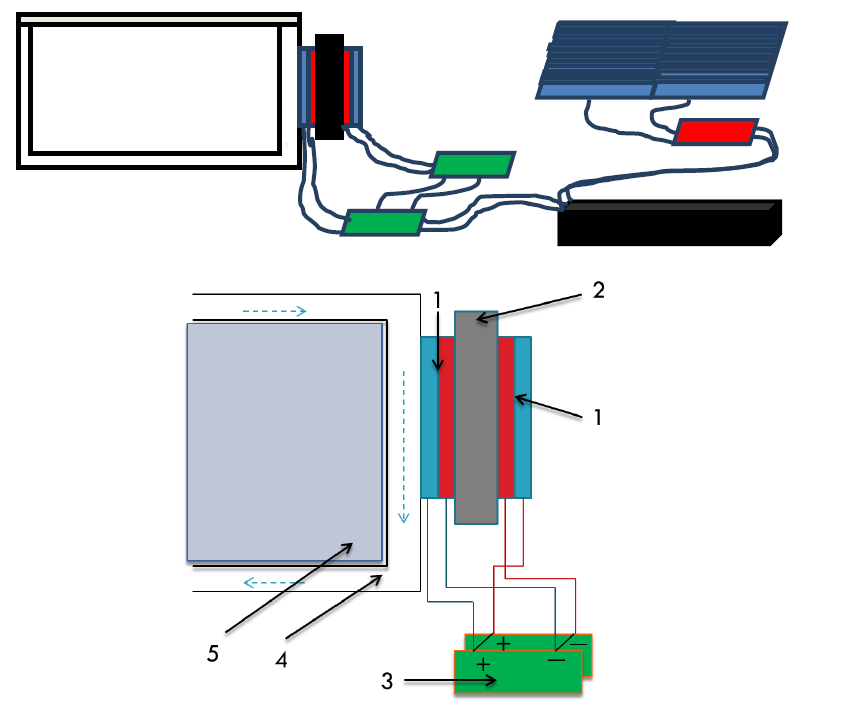Project Name: Self-Sustaining Thermoelectric Refrigeration system
Theme : Industry
Project Overview: Refrigeration is defined as lowering the temperature of an enclosed space by removing heat from that space and transferring it elsewhere. Vaporcompression cycle is used in most household refrigerators as well as in many large commercial, industrial and automotive refrigeration systems.

Following are some of the major problems with today’s refrigeration systems:
Many of these systems use HFC and HCFC refrigerants, which contribute to greenhouse gases and depletion of Earth’s ozone layer. HFC refrigerants tend to be slightly less efficient than systems using HCFCs. HFCs have an extremely large global warming potential as they remain in the atmosphere for many years and trap heat more effectively than carbon dioxide. Nonhaloalkane refrigerants are gaining popularity and once-abandoned refrigerants, hydrocarbons (e.g. butane) and CO2 are being extensively used.
Due to many moving parts, refrigeration systems need regular maintenance to fix leaks and icing, icemaker malfunction, cooling problems and replacement of fan motors.
A modern energy-efficient model uses 350 kWh per year with ice maker turned OFF. When the icemaker is ON, then usage would double.
Today¡¦s systems need a constant power supply. They are bulky, not easily portable and have limitations for use.
These systems use air that is trapped inside when it is closed as a medium to cool the items. When the door is opened, the cool air is lost and the whole process has to repeat again, thus being energy intensive.
The project aims to design an emission free, energy efficient, self-sustaining, light weight and cost effective refrigeration system that could be used for a longer period of time.
Method and Experiments: The research and investigation into the above topics have helped to conceptualize, design and develop a working prototype model of an innovative system that has been used to test the key hypotheses of the project. The model leverages and combines modern eco-friendly technologies including nanotechnology, thermoelectric effects and solar energy into a single system.

Prototype Model: Cross section view
The prototype model has been designed to utilize the following innovative concepts:
1. Thermoelectric Cooler/Peltier Cooler (TEC) and Thermoelectric Generator (TEG) technologies be combined into a single module and considered as an alternate for the vapor-compression unit. A lead acid rechargeable battery is used to power up the Peltier Cooler. Solar power will be used to as an external energy source to charge the portable lead acid battery.
2. A heat sink is used to prevent overheating of the Peltier Cooler and also helps to quickly conduct the generated heat to the Thermoelectric Generator. Heat dissipated from the Peltier Cooler is re-cycled by the Thermoelectric Generator to generate electricity and continuously charge the portable lead-acid rechargeable battery. This mechanism provides a selfsustaining energy cycle.
3. A Voltage Stabilizer is used to stabilize the power from the Thermoelectric Generator before it is supplied to the Peltier Cooler.
4. Water is used as a natural, eco-friendly coolant and a replacement for the harmful HCFCs and HFCs. A water pipeline runs all around the food storage compartment. Through convection, water will automatically circulate throughout the two layers of the food storage compartment.
5. The food storage compartment area is used to store food items. As the cooled water flows in between the two layers, the food storage compartment also cools down, therefore cooling down the food items stored inside the unit.
An initial prototype model was developed and several experiments/trial runs were carried out using this model. The results/observations captured from the initial prototype were used to enhance and develop a second prototype. Trial runs using the second prototype are currently in progress.
Name of the School: Delhi Public School, Bangalore.
